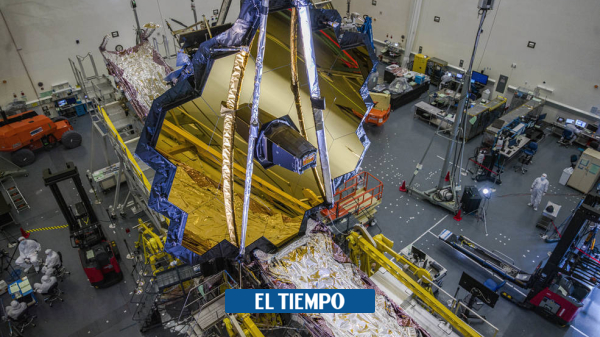We only know one planet, Earth, but there are countless stars outside our solar system Extraterrestrials, And that Telescope James
The web It will help to explore with its powerful tools.
This is one of the key tasks of this gigantic tool, which will take three decades to complete and is worth $ 10 billion to build. Its release is scheduled for December 22nd.
(You may be interested in: Secrets and discoveries revealed from the dark side of the moon)
Since the discovery of ’51 Pekasi B ‘in 1995, scientists have discovered about 5,000 exoplanets. As far as we know, these exoplanets should not be too close or too far away for the star to orbit one of them.
Some of those space objects are massive gas masses like Jupiter or Neptune, while others are rocks like Earth. All are too far away to be directly observed, and the rocks, which are of great interest, are small and hard to find.
So far astronomers have only been able to detect them when they move in front of their stars, because luminosity variations occur. By that observation they could not determine its size and density, but scientists could not find out what was going on in its atmospheric composition or on its surface.
(Also: According to NASA, five strange things happen in space)
‘Look at her heart’
That’s it Central infrared instrument (MIRI), a camera and spectrograph equipped to detect this type of light emission invisible to the human eye.
“It will revolutionize the way we look at the planets’ atmospheres. We can see their viscera!” Says Pierre-Oliver Lagage of the French space agency who worked at MIRI.
Pierre Ferruit, another scientist with the Web Project and a member of the European Space Agency, explained that MIRI could analyze the infrared path of light emitted as it filters through a planet’s atmosphere and passes in front of its star. .
In this way, Ferrut explained, scientists can find out whether there are molecules such as water vapor, carbon monoxide or methane in the atmosphere. Those three substances are in the Earth’s atmosphere and may show biological activity on the surface of the extraterrestrial in question.
(What else: The astronaut’s daughter and TV presenter were sent into space by Blue Origin)
“Imagine that twenty years ago we did not know about the exoplanets, but now we can know the composition of their atmospheres, which is enormous,” Ferrot added. “My dream is to find the atmosphere around a rocky planet in the habitable zone with water molecules,” explains Rene Doyn of the Exoplanets Research Institute in Montreal, which is responsible for another instrument on the web.
But that path is uncertain. Astronomers believe that Venus recently discovered a gas called phosphine, which is associated with biological activity. But analysis later showed that the track was incorrect.
Although the web telescope can detect biological molecules, Doen warns that their origin is “unattainable”. “For now, we are looking for life-friendly conditions such as the presence of liquid water,” he says.
Initially, the Web was already set up to study the Tropist-1 planetary system about 40 light-years from Earth. There are seven planets in that system, seven of which are in the habitable zone of a dwarf star that is not very bright.
The web may trigger a new astronomical classification. “The discovery of extraterrestrials is full of surprises,” warns Doen.
AFP


:quality(85)/cloudfront-us-east-1.images.arcpublishing.com/infobae/SMPW7M5BQFERBOQUPJXKCOKARY.jpg)
:quality(85)/cloudfront-us-east-1.images.arcpublishing.com/infobae/NP5NEZXMZFGNLBHNEQJHPJVMKM.jpg)

:quality(85)/cloudfront-us-east-1.images.arcpublishing.com/infobae/X7DZAL3I4REJTKPZ4Y4DYBHFMI.jpg)